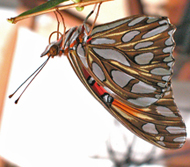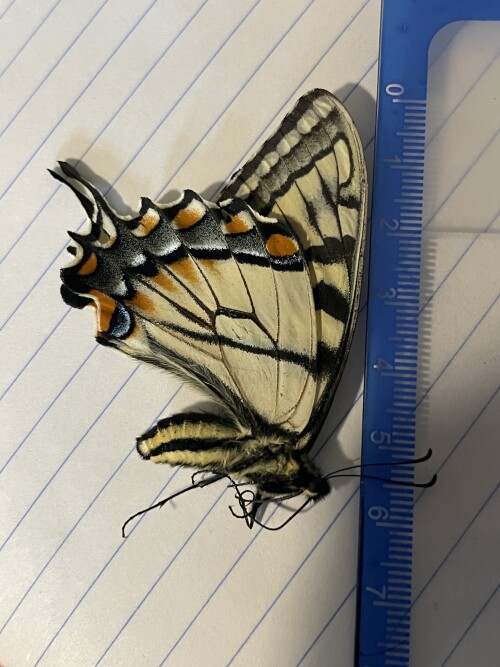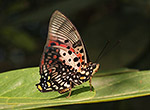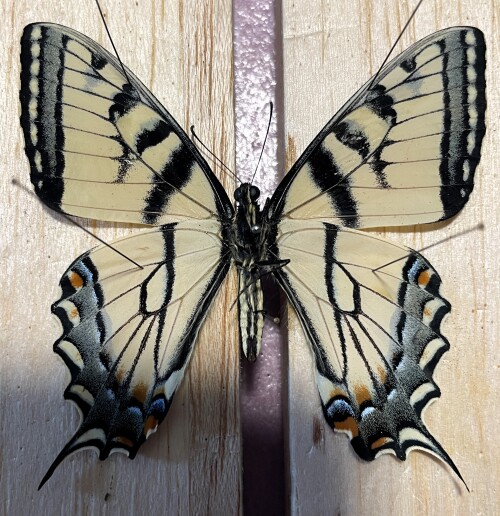-
eurytides

- Posts: 205
- Joined: Tue May 24, 2022 1:36 am
Re: Tiger Swallowtails of NY: Finger Lakes, Part II
by eurytides » Fri May 24, 2024 8:34 pm
-
Paul K

- Posts: 192
- Joined: Mon May 23, 2022 6:44 pm
Re: Tiger Swallowtails of NY: Finger Lakes, Part II
by Paul K » Fri May 24, 2024 8:10 pm
I’ve seen about 100 P.canadensis two days ago 150km north of Toronto, they were all fresh and many came to mud puddling (Urine bait).
-
Chuck

- Premium Member - 2024

- Posts: 957
- Joined: Mon May 23, 2022 2:30 pm
Re: Tiger Swallowtails of NY: Finger Lakes, Part II
by Chuck » Fri May 24, 2024 6:01 pm
So I headed a bit south where there are two ponds with shores, and watercourses, etc. Saw two. Drove 20 minutes south into the Bristol Hills, and saw nothing. Saw one on the way, one on return, both at valley level.
Observed 4, captured 0
-
Chuck

- Premium Member - 2024

- Posts: 957
- Joined: Mon May 23, 2022 2:30 pm
-
Chuck

- Premium Member - 2024

- Posts: 957
- Joined: Mon May 23, 2022 2:30 pm
Re: Limenitis chrysalides (continuation)
by Chuck » Fri May 24, 2024 11:50 am
-
lamprima2

- Premium Member - 2024

- Posts: 103
- Joined: Mon May 23, 2022 8:16 pm
Re: Limenitis chrysalides (continuation)
by lamprima2 » Fri May 24, 2024 4:42 am
-
kevinkk

- Premium Member - 2024

- Posts: 346
- Joined: Mon May 23, 2022 5:06 pm
Re: tiny caterpillars
by kevinkk » Fri May 24, 2024 12:22 am
The end, or almost end result. After 60 days in the fridge at 49f, and just under 30 days we have a male adult, having prior knowledge of what
can happen, he's going into a glass case in a few weeks.
These are big moths, big body, the wings measured at 122mm
- Attachments
-
- wallichi board.JPG (59.62 KiB) Viewed 34 times
-
Chuck

- Premium Member - 2024

- Posts: 957
- Joined: Mon May 23, 2022 2:30 pm
Re: Limenitis chrysalides (continuation)
by Chuck » Thu May 23, 2024 8:09 pm
-
Chuck

- Premium Member - 2024

- Posts: 957
- Joined: Mon May 23, 2022 2:30 pm
Re: Tiger Swallowtails of NY: Finger Lakes, Part II
by Chuck » Thu May 23, 2024 7:10 pm
To think- last year I had 40 days in the field before a single Tiger capture. This year, two in two days. And the first female Spring Form! Nectaring on Hesparis matronalis (dame's rocket).

Look at that sold yellow submarginal line. The black line on the wing along the abdomen is almost as wide as canadensis.
-
adamcotton

- Global Moderators

- Posts: 786
- Joined: Tue Mar 22, 2022 12:24 pm
Re: Limenitis chrysalides (continuation)
by adamcotton » Thu May 23, 2024 5:40 pm
Adam.
-
Chuck

- Premium Member - 2024

- Posts: 957
- Joined: Mon May 23, 2022 2:30 pm
Re: Limenitis chrysalides (continuation)
by Chuck » Thu May 23, 2024 5:18 pm
-
bobw

- Global Moderators

- Posts: 182
- Joined: Tue Mar 22, 2022 2:53 pm
Re: Limenitis chrysalides (continuation)
by bobw » Thu May 23, 2024 3:49 pm
-
adamcotton

- Global Moderators

- Posts: 786
- Joined: Tue Mar 22, 2022 12:24 pm
Re: Limenitis chrysalides (continuation)
by adamcotton » Thu May 23, 2024 2:48 pm
Adam.
-
Chuck

- Premium Member - 2024

- Posts: 957
- Joined: Mon May 23, 2022 2:30 pm
Re: Limenitis chrysalides (continuation)
by Chuck » Thu May 23, 2024 11:27 am
-
lamprima2

- Premium Member - 2024

- Posts: 103
- Joined: Mon May 23, 2022 8:16 pm
Limenitis chrysalides (continuation)
by lamprima2 » Thu May 23, 2024 4:47 am
a flipper-like outgrowth on the base of the abdomen of Limenitis lorquini
chrysalides. Since then, the leps have eclosed. Both sexes have a cluster
of elongated setae on the base of the abdomen, corresponding to that flipper-like
structure of a chrysalis. Any thoughts about the possible function of these setae?
-
livingplanet3

- Premium Member - 2024

- Posts: 608
- Joined: Tue May 24, 2022 4:55 pm
Re: Eurytides marcellus
by livingplanet3 » Thu May 23, 2024 4:21 am
I've planted a lot of Lantana in the backyard this spring; it's growing fast and already blooming well, and attracting many butterflies of various species as well as day-flying sphinx moths (Hemaris spp.). I'm hoping to see a few stray species from further south. Back in the mid-1980s, I caught an Anteos clorinde on some Lantana here - was quite excited about that; have never seen another one since!
https://bugguide.net/node/view/6561

(Source: https://www.inaturalist.org/taxa/148856 ... wse_photos)
-
Chuck

- Premium Member - 2024

- Posts: 957
- Joined: Mon May 23, 2022 2:30 pm
Re: Where to buy: Bioquip folding net "National Park Special"
by Chuck » Wed May 22, 2024 8:35 pm
SHORT VERSION:
1. The connecting handle sections are shorter on the Stout net (good)
2. The BQNPS net connection will fit the Stout handle sections, but not vice versa
3. Net bags are the same dimensions, but new nets are stiff!
LONG VERSION:
I'd like to say I learned this by trial and error, but really it was all error.
Due to the length of the BQNPS handle sections, if I was travelling I had to take an oversized bag that would only fit some airline overhead bins. This was a pain.
So I got smart, and cut down one of the BQNPS sections by about 3" so it would fit in a small carry-on.
In doing so I was able to fit the ring and one handle extension in a small carry on. Then, in the field, I frustratingly discovered that one section provides insufficient power and speed.
So I cut down a second BQNPS section, and drilled the connecting hole.
That's when I discovered that the Stout/ Raising Butterflies handle is comprised of shorter extension sections. Arrrrgghhh! These make it SO much easier to travel.
So today I grabbed "some stuff" and headed out to the field. When I got there, with the Stout ring and first extension, I discovered that it does not latch into the BQNPS handle extensions. "Fortunately" I only took a shot at one butterfly, and the assembly did not come apart.
Then I tried the various combinations, and determined that the BQNPS and Stout net-end and handle extensions are not compatible. So keep them separate; that said, it would be easy enough to modify with a file or dremel.
SUMMARY: Stout/ Raising Butterflies net is better for travel than the old BQNPS.
-
wollastoni

- Site Admin

- Posts: 481
- Joined: Fri Mar 18, 2022 9:51 am
Re: "Reptile Heaven" and "WildinsectUSA" = SCAM
by wollastoni » Wed May 22, 2024 4:11 pm
-
Chuck

- Premium Member - 2024

- Posts: 957
- Joined: Mon May 23, 2022 2:30 pm
Re: Tiger Swallowtails of NY: Finger Lakes, Part II
by Chuck » Wed May 22, 2024 2:45 pm
A lucky catch this morning- in the back yard-of "Spring Form". Clearly not canadensis, but looks more like MST than glaucus. The most recent capture of "spring form" was 2020- I've seen them, just can't get a net on them!

Now, Spring Form is very interesting. Way back in 1985 Hagen and Lederhouse proved that the spring flight and late flight were both univoltine. They were at the time though considered Papilio glaucus, as was what would later be split off as canadensis.
But now we know that the late flight (= MST) is a recombinant hybrid (and I'm waiting patiently for peer review of the description.) And we know canadensis is a different species. So what is "Spring Form"? Is it Papilio glaucus? Are there two univoltine flights of MST? Or is it yet another recombinant hybrid like MST and appalachiensis? Why is it univoltine when there's plenty of time for a second generation?
Daily totals:
5/18: two observed, zero captured
5/22: two observed, one captured
-
Chuck

- Premium Member - 2024

- Posts: 957
- Joined: Mon May 23, 2022 2:30 pm
Re: Eurytides marcellus
by Chuck » Wed May 22, 2024 11:55 am

